Heteroblastic Development of Transfer Cells: A Role for MicroRNA
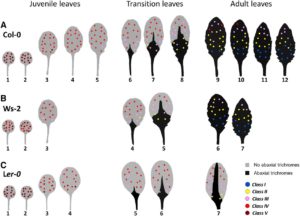 Transfer cells (TCs) play critical roles in membrane transport of solutes at various sites within plants and between plants and their environment. This transport capacity is conferred by inward wall protuberances that extend into the cell lumen. These ingrowths function to enhance the area of surrounding plasma membrane, therefore increasing surface-to-volume ratio of the TC and consequently promoting the transmembrane flux of solutes. Across the plant kingdom, the occurrence of TCs is proposed to be an indicator of anatomical locations where intensive transport occurs. In Arabidopsis (Arabidopsis thaliana), phloem parenchyma (PP) cells in the minor vein network of leaves and sepals can develop wall ingrowths to become PP TCs. Wall ingrowths in these PP TCs are typically bulky and predominantly abut sieve elements and to a lesser extent companion cells. PP TCs have been assumed to facilitate the efflux of photoassimilates. Nguyen et al. (Plant Physiol. 173: 1676–1691) now report that wall ingrowth deposition in PP TCs in leaf veins of Arabidopsis represents a novel trait of heteroblasty. PP TCs with extensive wall ingrowths are ubiquitous in mature cotyledons and juvenile leaves, but dramatically less so in mature adult leaves, an observation consistent with PP TC development reflecting vegetative phase change in Arabidopsis. Consistent with this conclusion, the abundance of PP TCs with extensive wall ingrowths varied across rosette development in three ecotypes displaying differing durations of juvenility. PP TC development across juvenile, transition, and adult leaves correlated positively with levels of miR156, a major regulator of the vegetative phase change in plants.
Transfer cells (TCs) play critical roles in membrane transport of solutes at various sites within plants and between plants and their environment. This transport capacity is conferred by inward wall protuberances that extend into the cell lumen. These ingrowths function to enhance the area of surrounding plasma membrane, therefore increasing surface-to-volume ratio of the TC and consequently promoting the transmembrane flux of solutes. Across the plant kingdom, the occurrence of TCs is proposed to be an indicator of anatomical locations where intensive transport occurs. In Arabidopsis (Arabidopsis thaliana), phloem parenchyma (PP) cells in the minor vein network of leaves and sepals can develop wall ingrowths to become PP TCs. Wall ingrowths in these PP TCs are typically bulky and predominantly abut sieve elements and to a lesser extent companion cells. PP TCs have been assumed to facilitate the efflux of photoassimilates. Nguyen et al. (Plant Physiol. 173: 1676–1691) now report that wall ingrowth deposition in PP TCs in leaf veins of Arabidopsis represents a novel trait of heteroblasty. PP TCs with extensive wall ingrowths are ubiquitous in mature cotyledons and juvenile leaves, but dramatically less so in mature adult leaves, an observation consistent with PP TC development reflecting vegetative phase change in Arabidopsis. Consistent with this conclusion, the abundance of PP TCs with extensive wall ingrowths varied across rosette development in three ecotypes displaying differing durations of juvenility. PP TC development across juvenile, transition, and adult leaves correlated positively with levels of miR156, a major regulator of the vegetative phase change in plants.


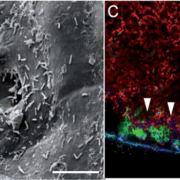

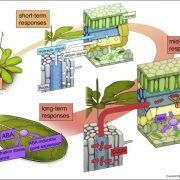
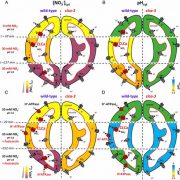
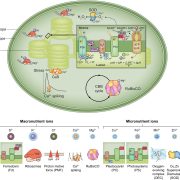
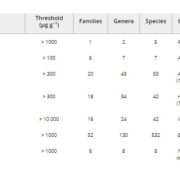

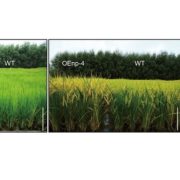


Leave a Reply
Want to join the discussion?Feel free to contribute!